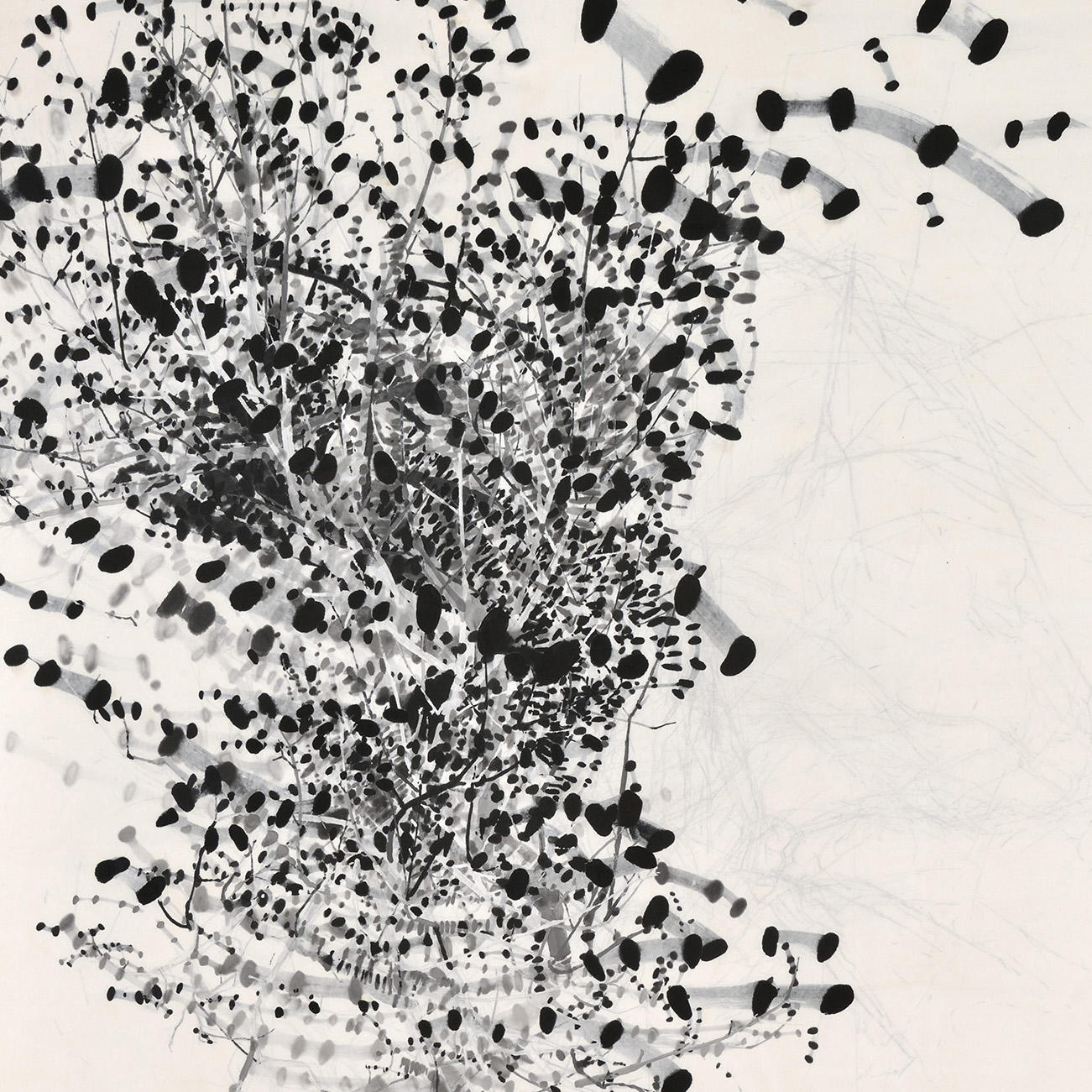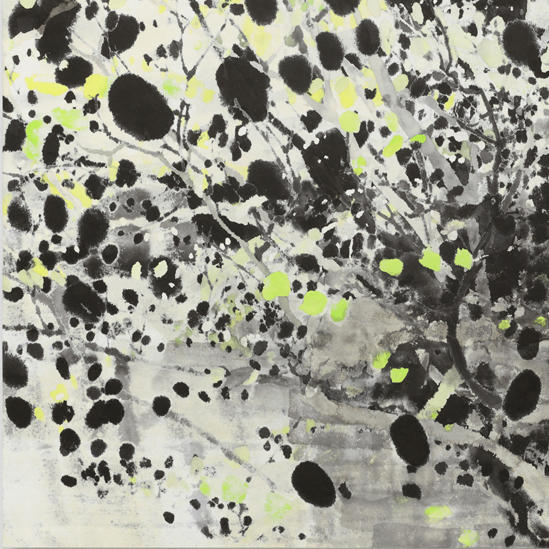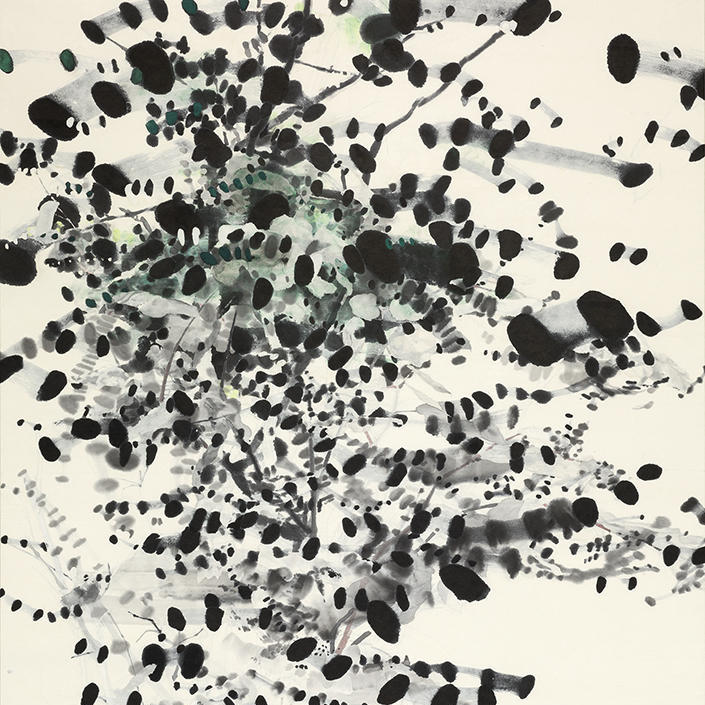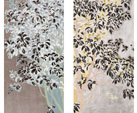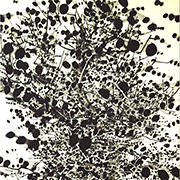Project
Takako Azami: Moment of Decision-various motifs are only introduction
Gallery
At the occasion of Takako Azami's solo exhibit "Moment of Decision", the artist reveals her dialogue with the trees in motif or her artistic attitude vis-a-vis artwork. If her dotting sumi ink after a number of sketches remains basically the same, "gray net" , white dot lines or limited use of colors are newly introduced elements which attracts attention at this exhibit.
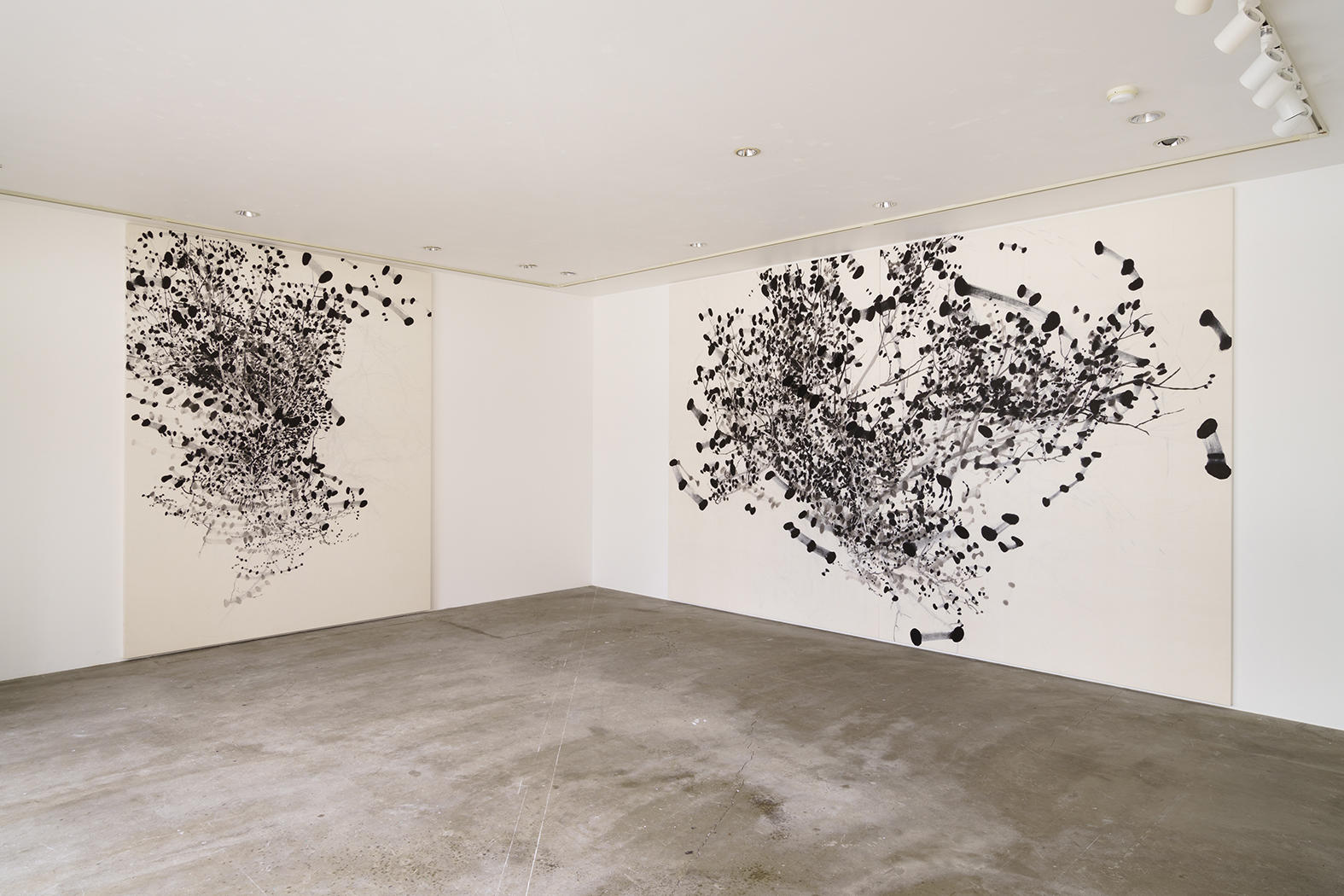
Installation view of the exhibition
“transformation” (left) 2017 sumi ink, shell powder, resinous glue, hemp paper, 2650 x 2060
“transform 2108” (right) 2021 sumi ink, pigments, resinous glue, hemp paper, 2650 x 4000
Decipher the complexity of the collapsing trees
―“tansform 2108”, exhibited in the Yokosuka Museum of Art, has its dense center with the surrounding lines.
-The plum tree with mistletoe is my recent favorite motif. It is located on the side of our croft, not in use, so is not well maintained. Now the branches are out of control, housing the mistletoe covering almost one-third of the entire tree, which looks like almost “collapsing”. While the plum tree inside the garden also seems interesting with their branched scattered in the space, this plum with mistletoe is not under-control, and another mistletoe making curve. In addition, the appearance naturally varies according to the season, showing in summer the plum with mistletoe and in winter the mistletoe exists without the leaves of plum. The painting in the next room depicts the same plum tree, however, it is rather light in impression since the viewpoint is fairly distant compared with “transform 2108”. The soft touched area in the center represents the mistletoe, and the surrounding area the plum tree.
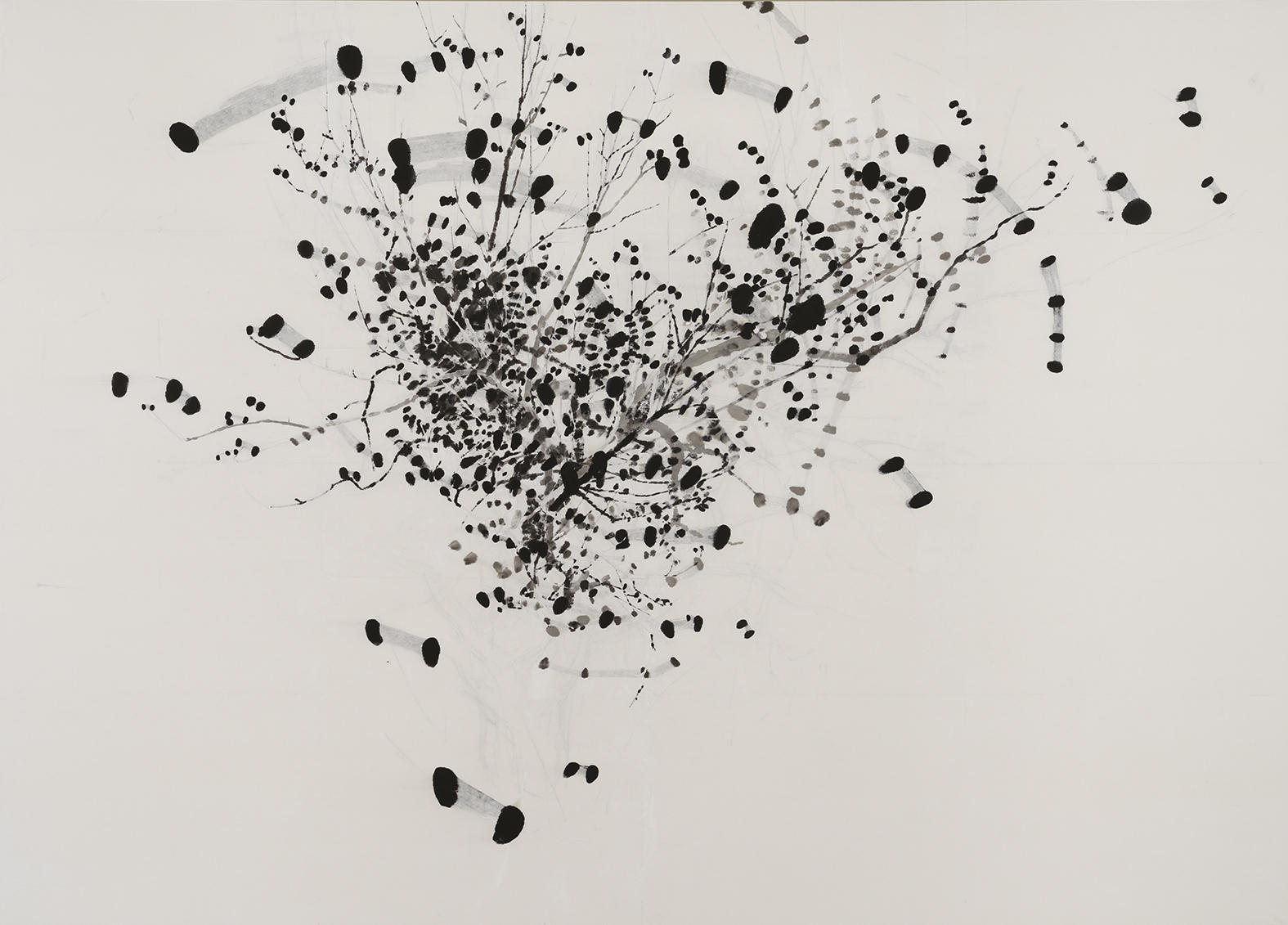
“Plum tree with mistletoe” 2021 sumi ink, pigments, resinous glue, hemp paper 1900 x 2650mm
The complexity of the plum and mistletoe pushed me to start my painting, but still I have not finished drawing the combination of these two different species. They are entangling with such complicated composition, so I keep going, hoping to achieve it before the plum tree breaks down.
―If you repeatedly depict the same tree, still there left something different to focus on?
―Sure. Every time I discover something new, so I sketch again and again. Sometimes I go seeing the tree before drawing, in order to decide the staring point on the picture plane representing the energy or power of the tree with large dots of sumi ink. Once I grasp what I will paint through a number of sketches, then, I can begin painting. If my previous sketches serve as references, it will not serve well (laughing). Rather, I sketch again to “register” with my own hand the feeling that I have in front of motif at this moment, and I paint referring to it. I take pictures as well, but they are mere notes to check the light condition or moving environment.
Moment of Decision
―How did you come to entitle the exhibition as Moment of Decision?
―Here the “moment” indicates the moment where I apply the resinous glue to finish my work. Normally the painters of Japanese painting apply the glue first to prevent the blurring effect, to use the mineral pigments accordingly. In my case, I apply the sumi ink or pigments from the reverse or back side, so “raw” surface of the hemp paper without glue is essential to me. First, I draw the rough layout of branches with charcoal, then I move into the main motif of dotting or drawing line of branches. The moment of applying glue is the moment of decision, when the layers of dots and lines become suddenly clear. Just as the adhesive bond becomes transparent or clear, the acrylic glue makes the surface clear, which will be in its turn pasted on the panel as finished work.
Before the glue applied, the surface is still uneven where I cannot foresee what will the finished work to be, and that is the moment for decision. In short, every work or every exhibition needs the repetition of moments of decision, and once the decision is executed, there could be no change any more. This time, it is such the case, too, and how the title of the exhibit was generated.
On the other side, the meaning of decision in Japanese dictionary includes the Chinese character of an ax, which means that “decide” refers to the ax to finish the production of a fabric by cutting it off. I thought it also applies to the artwork, not only fabric.
At first, I put large-sized dots, and these dots can only be drawn after the sketch of the branches. This branch of the plum tree depicting only the head of branches, showing some bluish area. At night, the plum is in the nice incense, the blue color suggesting night time.
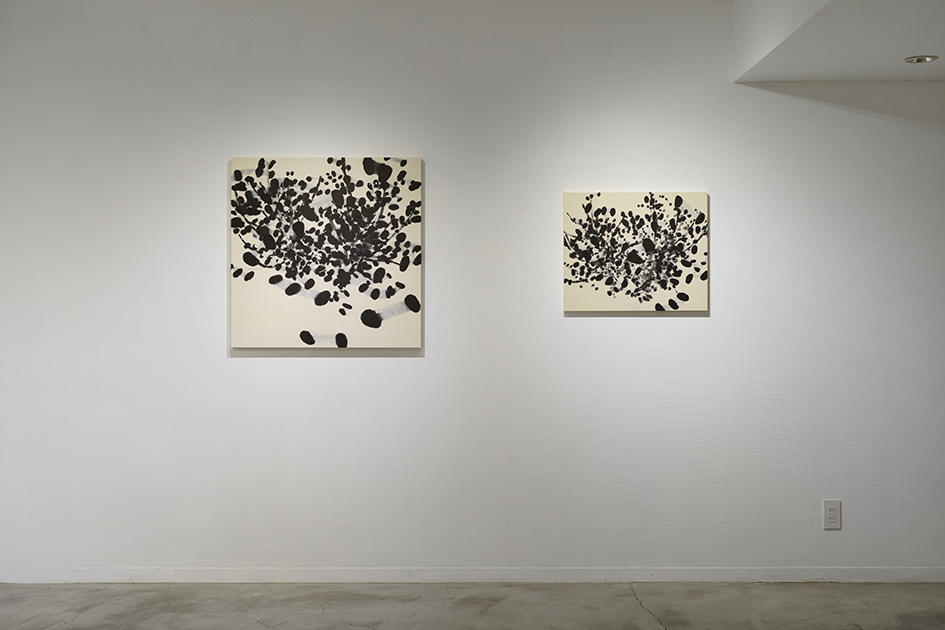
“The Burning Bush 2111” 2021, sumi ink, pigments, resinous glue, hemp paper 800 x 800 (left, sold)
“The Burning Bush 2110” 2021, sumi ink, pigments, resinous glue, hemp paper, 500 x 606 (right)
Impressed by the lively energy of the burning bush, I painted without sketches
This tree, called burning bush, surprised me with its liveliness when I opened the window of my studio after absence. The tree was well maintained by the gardeners last year, when the fresh leaves was generated out of the cult off point. As you might know, the burning bush has a trunk having leaves with two lines, white line in the center changing the color now in fall.
This paper with the cream white color is called Kumohada hemp paper、and is often used in my work in case of depiction of the energetic or massive trees such us pine tree, for example. Burning bush is short tree, but lively, and that is why I chose Kumohada, then painting directly without repeating sketches. Watching tree in front, I carried the brushwork directly, or even wildly, so that the painting itself becomes powerful, even in excess with its abundant brushwork.
I may keep on painting burnishing bushes with expecting possibility of developing my style, since it changes color according to season. Sumi ink is blurred from the back side, the center of a dot is strong while the surrounding is not so much. The freshest part of the sumi is appearing in the layers, whence comes the screened beauty of the colors which is also lively and energetic.
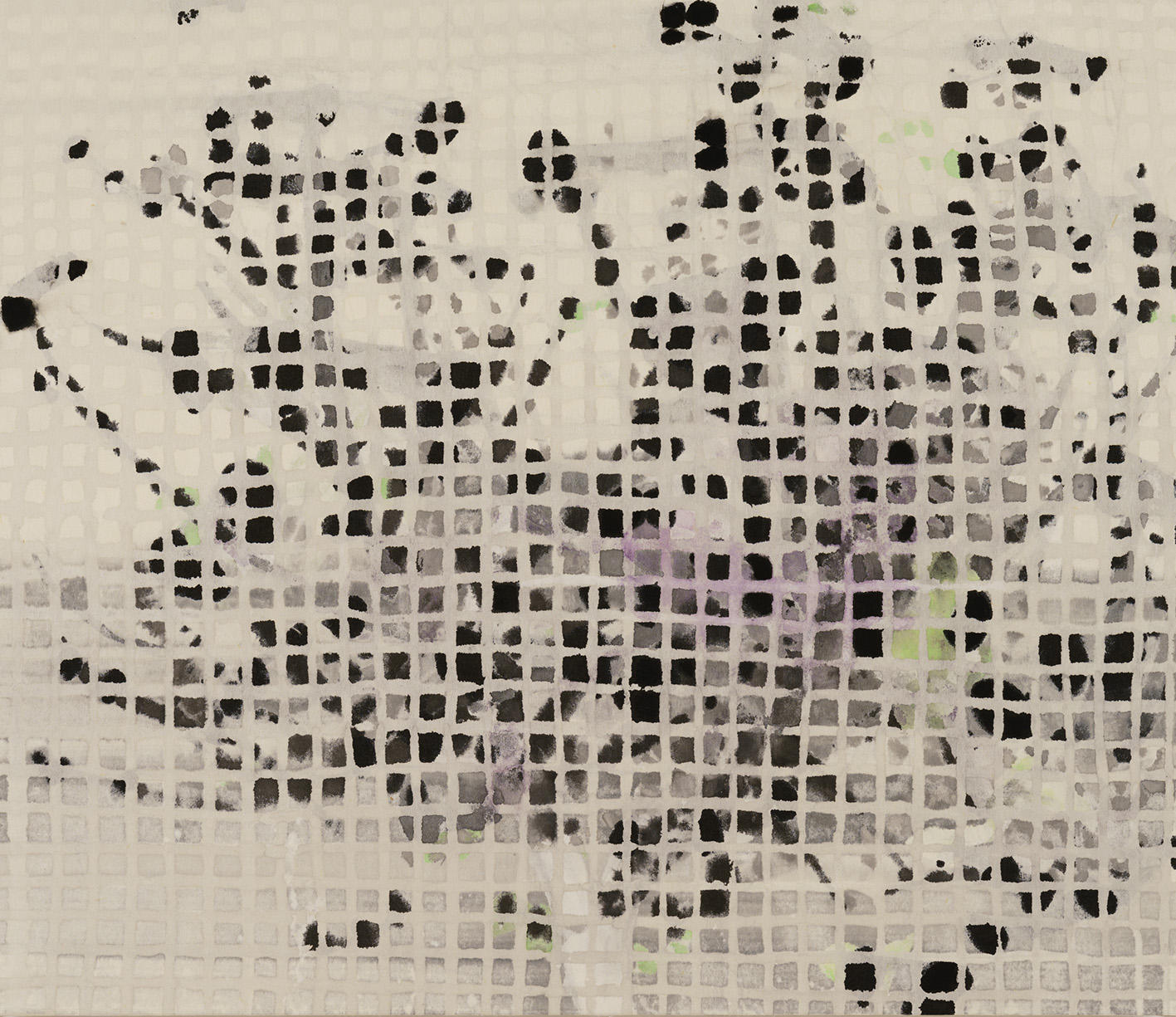
gray net 211001 The same burning bushes has been depicted over the screen window is depicted.
2021, sumi ink, pigments, resinous glue, hemp paper 455 x 530mm
gray net series, and another new series generating from it
In the exhibit “Process of Transformation”, I tried with this gray net series painting burning bush with the window to next room closed. The leaves are still green in color before change, but the light giving color scheme, the yellow green and violet was applied a little. The light comes through the closed screen window, shadowing on the screen where the shadow becomes transparent to see better the other side of the screen. The scenery with the screen window also touched me, so I drew the screen window first, then the branches or leaves after.

gray net 211101 burning bushes over the screen window is depicted.
This piece was on Nikkei Shinbun’s Sunday Cut, November 28, 2021.
2021, sumi ink, pigments, resinous glue, hemp paper 455 x 530mm
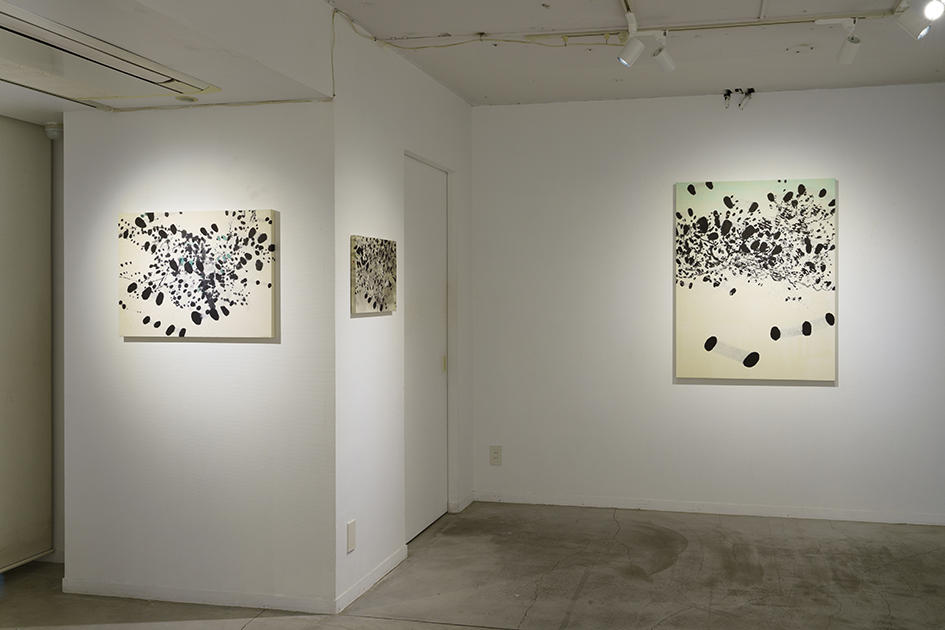
―This vertical “Pine Tree, Dawn” looks new!
―White dot-line is the new elements introduced here for the first time, which came out of my challenge with gray net series. For the depiction of screen window, the white color was painted first and it was an interesting discovery. I applied this system to drawing the pine tree as well. As you see, the pine tree at the gate of my home has a trunk with branches and leaves in the upper space, so I was drawing looking up these leaves but struggling how I reach the detail of the upper leaves. At the moment, I discovered the mist in the dawn against the morning sky, moving upper-right or upper-left, or even horizontally. The particle of the mist can go forth or back, moving on the air current, different from the rain, so I tried this challenge for the first time to introduce mist into my picture.
These white dots are also painted from the reverse side of the paper. To differentiate these dots from the background, I mixed a little bit of sumi ink with shell powder. At First, I hesitated to paint the mist in dots, which is ambivalent between visible and invisible, but the leaves have also been represented in large dots, whereas in reality pine leaves are like lines and not large dots. The other trees are also the case, but the representation of the trees as they mean only the starting point of my work, The white lines can be seen as light or be interpreted as wind or fog, so the audience will see differently according to his own viewpoint. In other words, the essential is what will develop on the picture plane based on the depiction of the trees. Many years ago, I tried with rain, snow but I realized that the mist is totally different in its movement compared with rain and snow.
―Your starting point is visible, while you will not foresee the developing result.
―Yes, that is true. With my limited time, I am sill able to challenge such introduction.
Regarding the green part, malachite is the finest particle among the mineral pigments, so I tried to introduce this whitish green to make more evident the white lines, Usually I apply see shell powder from the backside only after the application of resinous glue, but taking the Dimension of the piece into account, I painted shell powder and malachite from the outset so that green and white colors appear in the mid-ground, to give birth to the “resistant” texture, which I find interesting. Shell powder is mixed with malachite, so the color scheme of the green color is restrained. This piece is the debut work for me, and that is why it is nice and reckless, without feeling of hesitation (laugh).
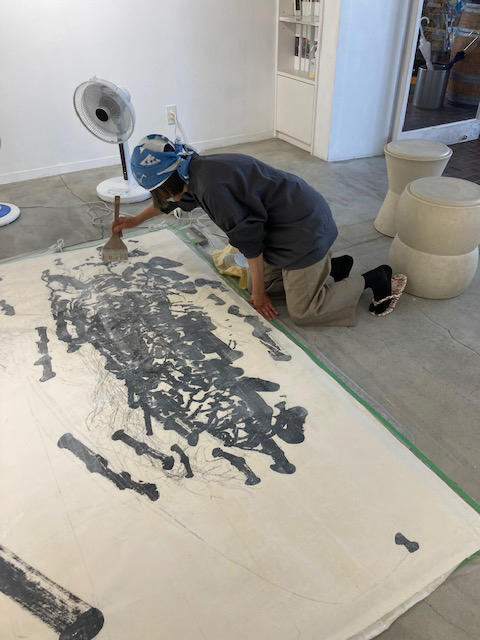

“Branches of the Pine Tree” 2021 sumi ink, pigments, resinous glue, hemp paper
1400 x 2000
―This piece is the second work?
―I drew the dotted white line without use of colors. I wonder if I will be able to draw only the dotted line, so may be in the future. Dotted line sheds light on various possibilities.
―(question from audience)Did you paint this pine tree, looking up the tree?
― Yes, I was sitting on a stool, while I was looking the plum tree from above.
―(same)What do you feel discomfort when you “discover” the left and right reversed?
― After turning over the paper, I try to rediscover what I have painted in some time, judging only the overall point. So, action of turning is not very often, I turn over only when I finish the 50% to 80% of the entire image. If the structure of the trees is well grasped, I rely on myself not to take risk even if I draw freely on the backside. Both work on the front and back side will push me to the finish, repeating the moment of decision.
―You will see then the normally sketched image, but from the back side.
―Yes, that is true. It gives me also a fresh feeling. Then I paste the paper on the panel.
Sometimes I feel the exhibited work is as if it is no longer mine!
The exhibit “Moment of Decision” is through December 5 (Sun). We appreciate our kind visit!
Artists
Related News

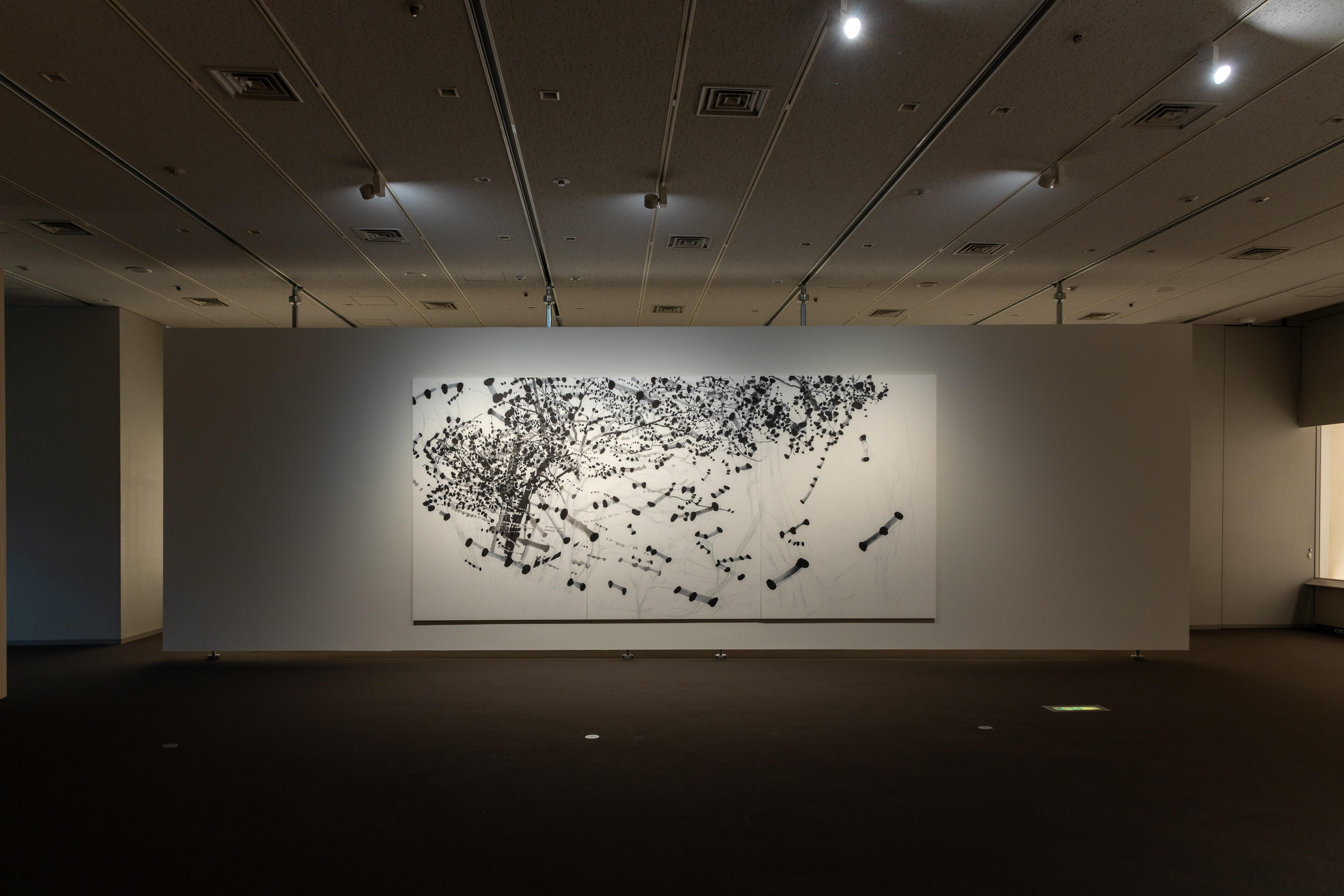
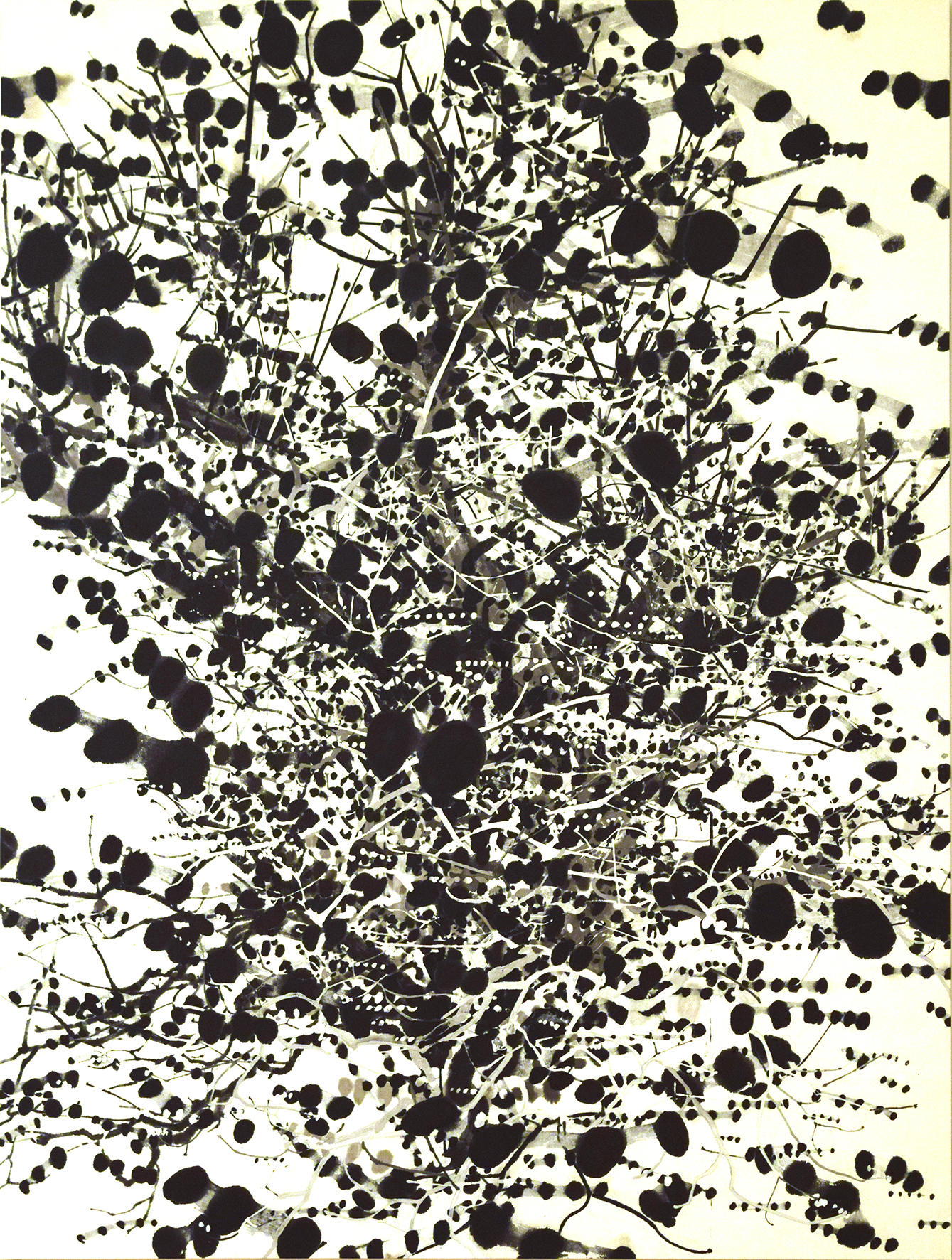

![[Interview] Takako Azami: Moment of Decision-various motifs are only introduction](https://artfrontgallery.com/whatsnew/assets_c/2021/12/d57fa48196dbee1e4635dffe8b676b363afdd139-thumb-4898x3265-9415.jpg)
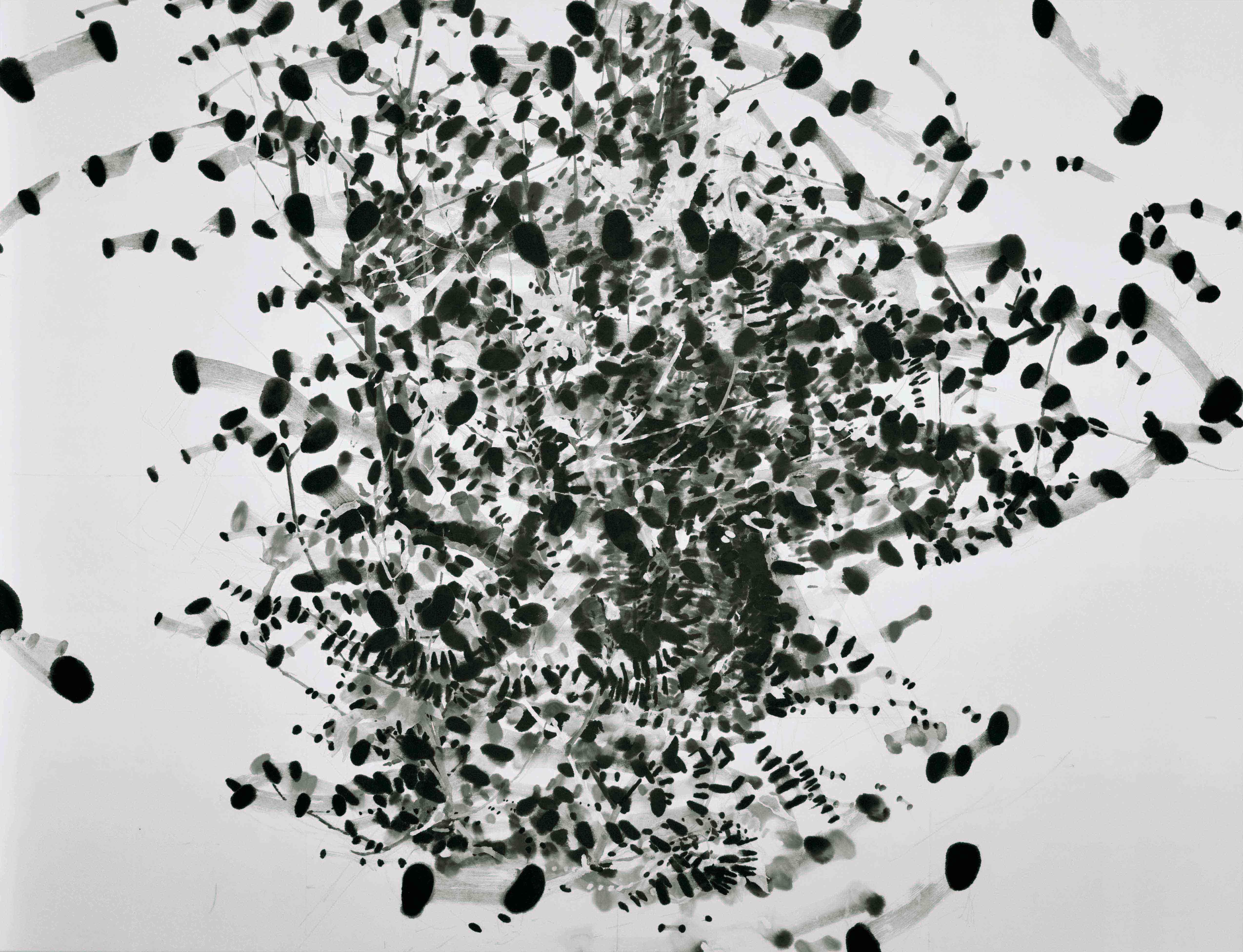
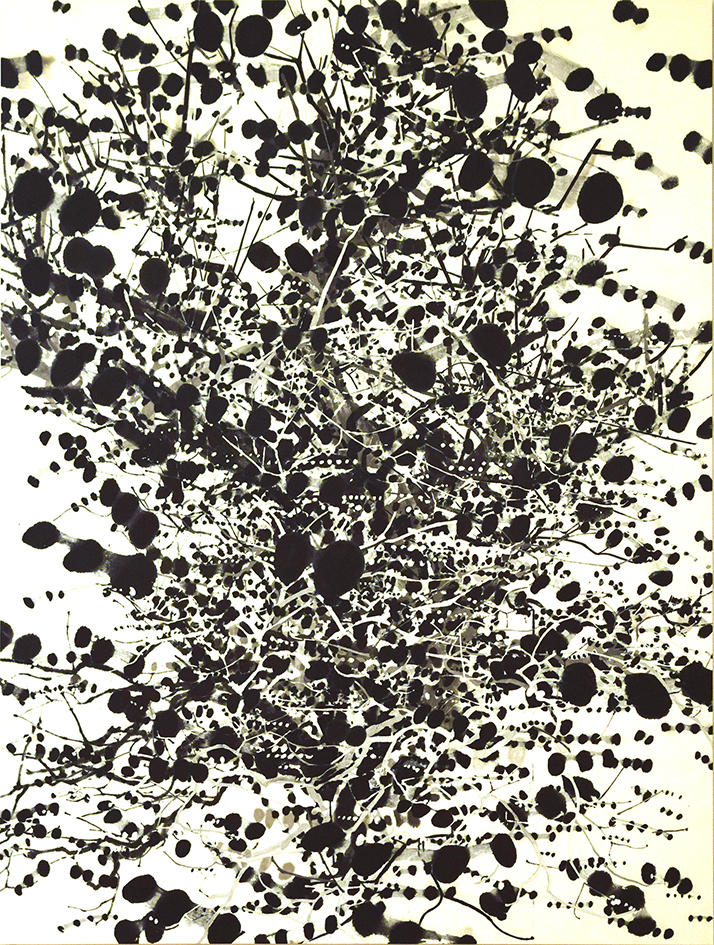
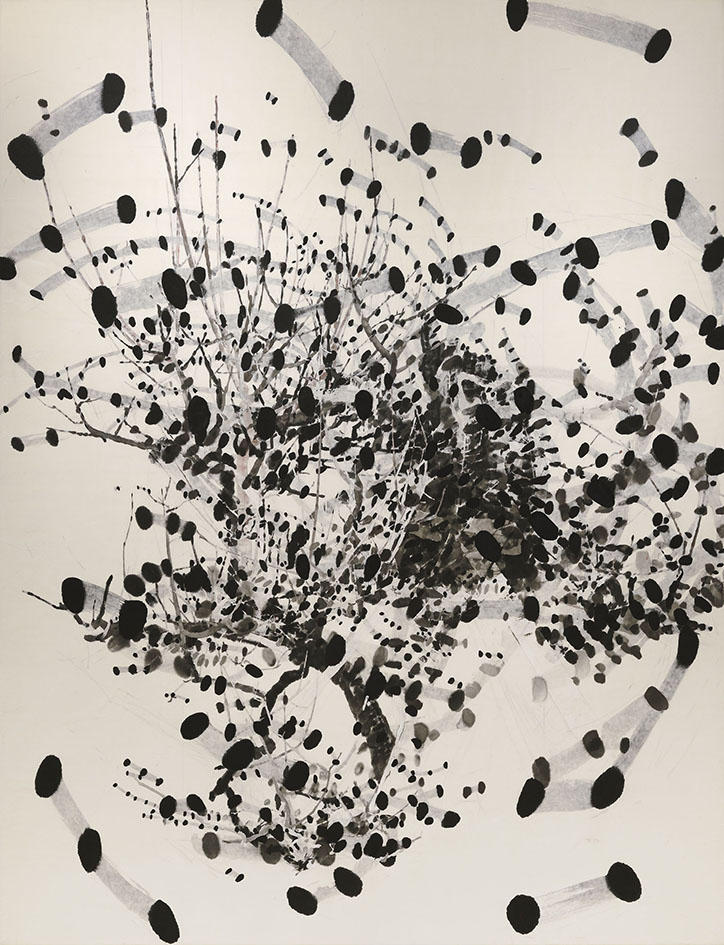
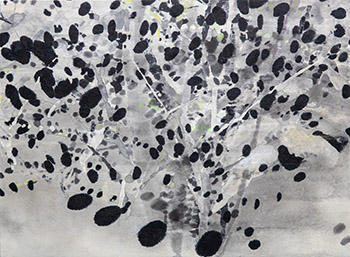
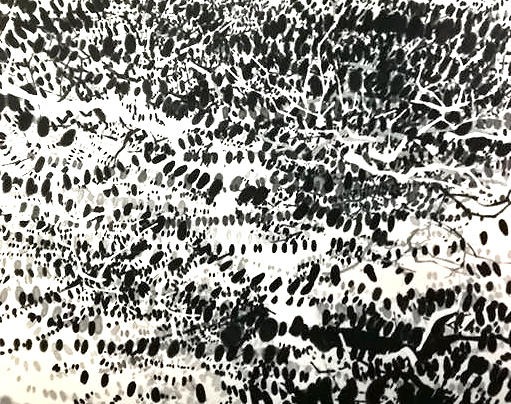


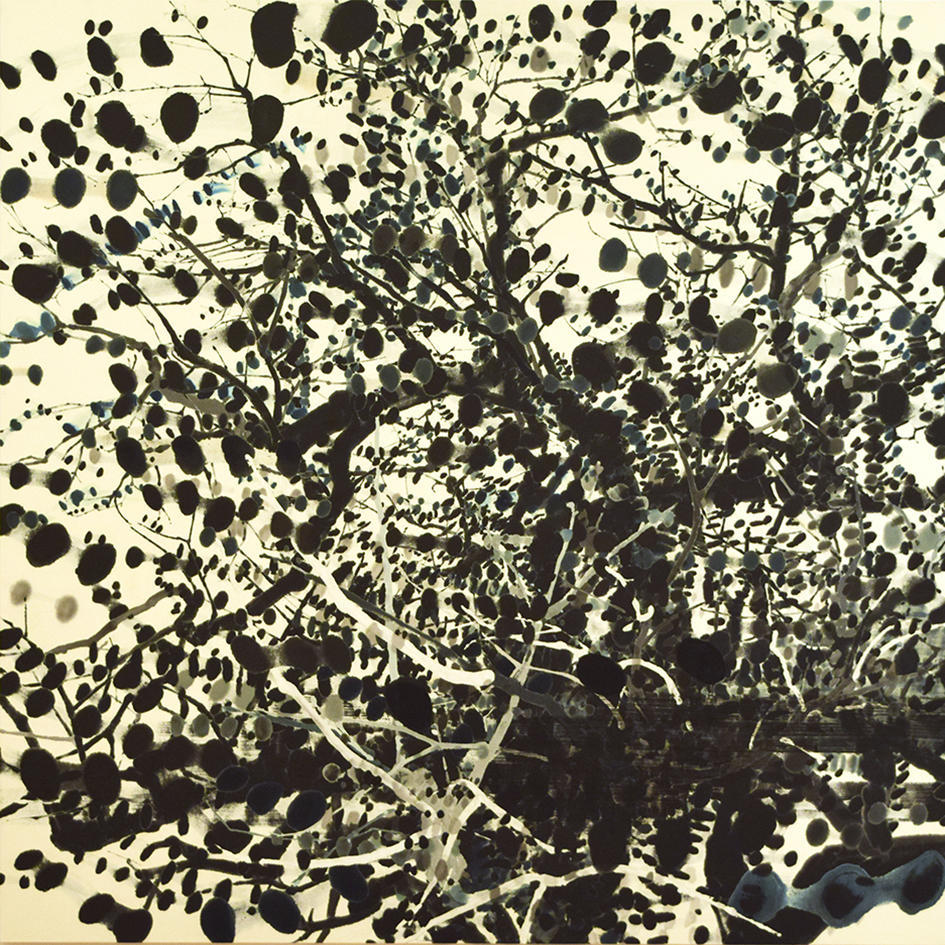

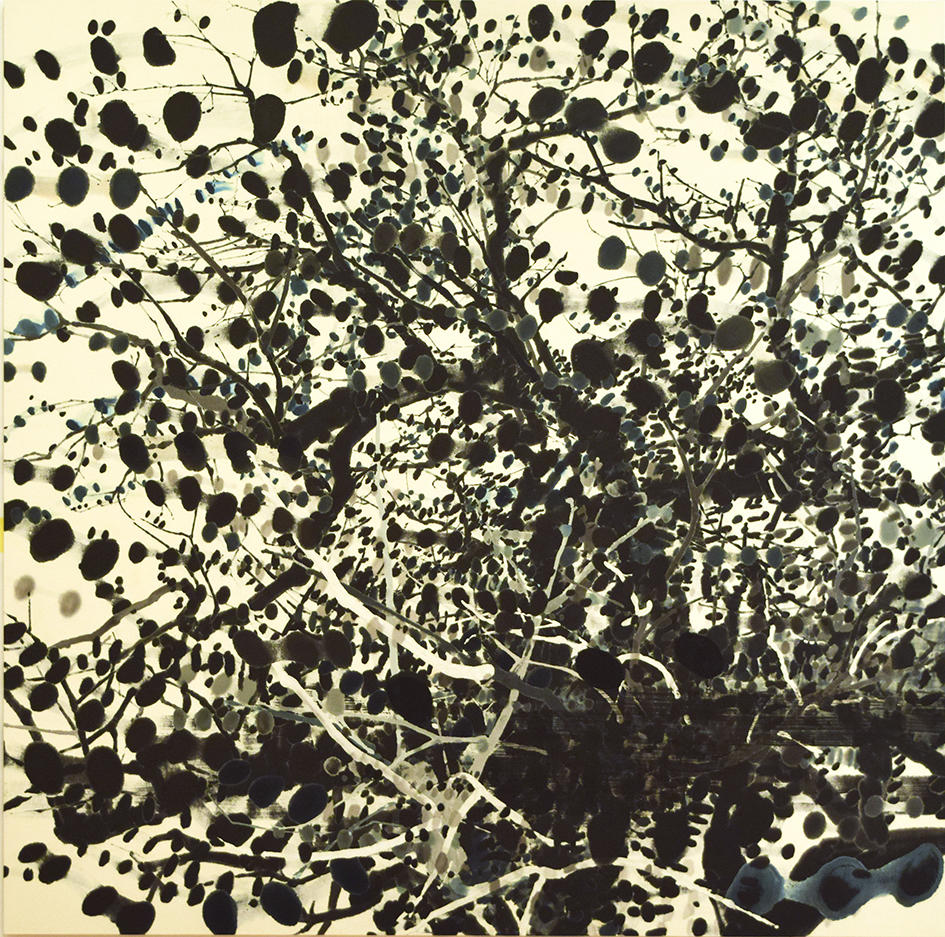
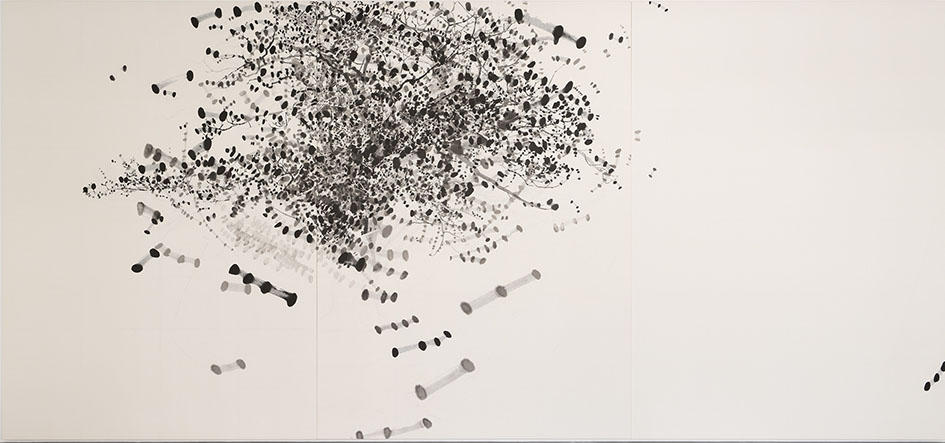

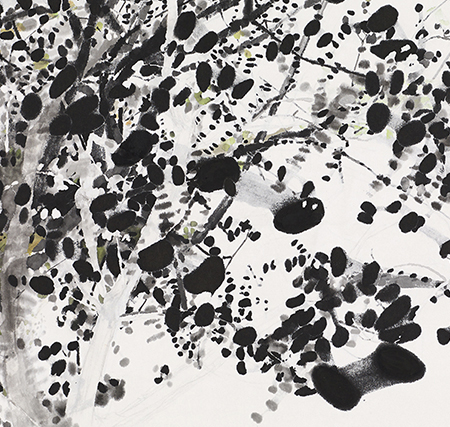
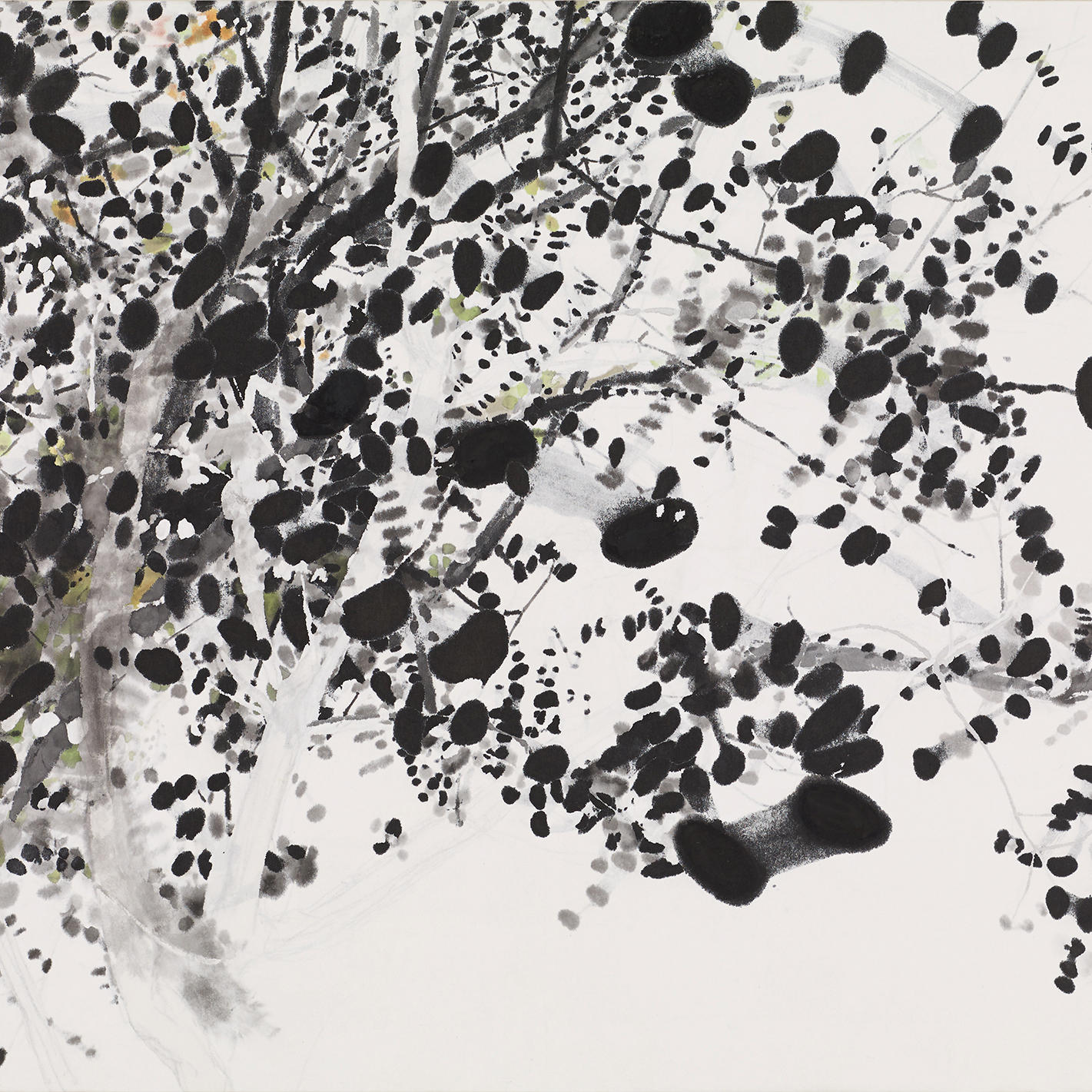
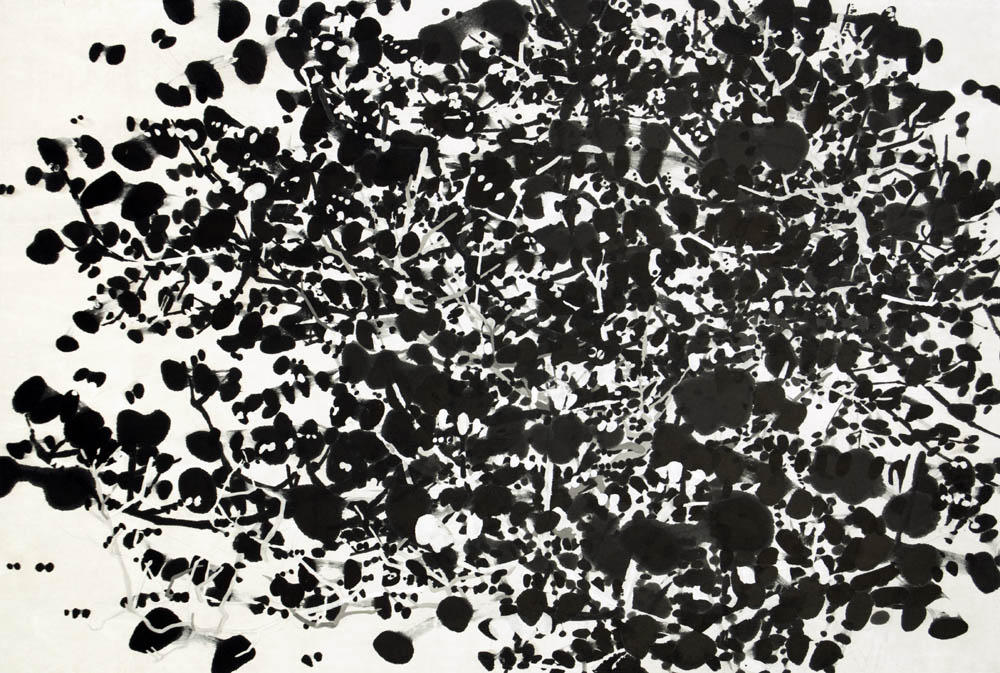
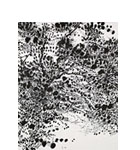
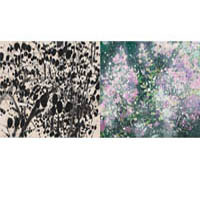



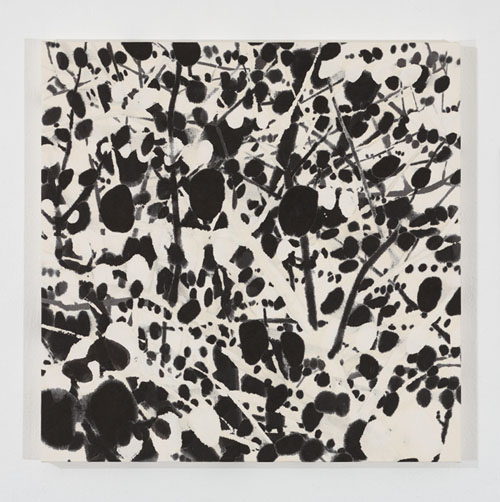
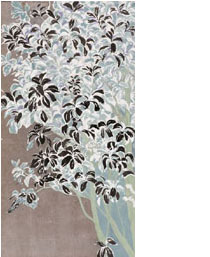

Related Exhibition
